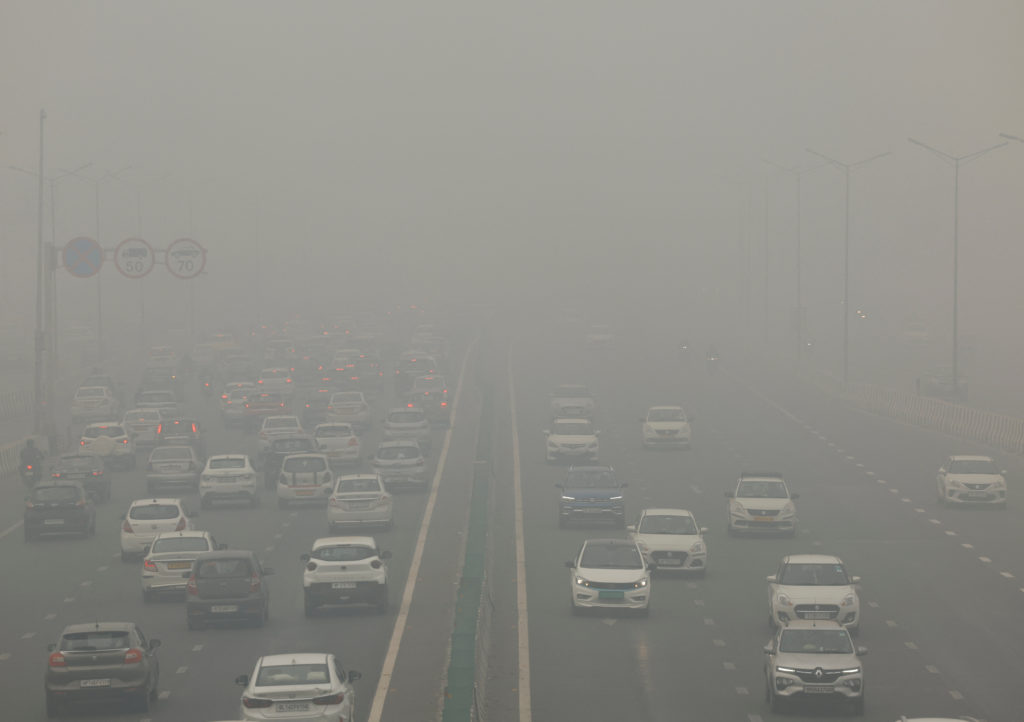NEW DELHI (AP) — Authorities in India’s capital closed schools, halted construction and stopped non-essential trucks from entering the city Monday as air pollution rose to the worst levels of the season. Entry was prohibited.
Air quality has become increasingly dangerous, with residents of New Delhi finding a thick, toxic smog blanketing the city of about 33 million people. The condition was placed in a more serious category, according to SAFAR, the country’s main environmental agency, which measures tiny particulate matter in the air that can penetrate deep into the lungs.
Read more: Pakistan closes schools in Lahore due to dangerous air quality
Airlines warned of delays as deadly fog blanketed the capital’s monuments and skyscrapers and visibility was very low.

A monk wearing a protective mask walks through a market in New Delhi, India, on November 18, 2024. Photo: Anushree Fadnavis/Reuters
In some areas of the city, pollution levels reached more than 50 times the safe limit recommended by the World Health Organization. According to the forecast, the poor air quality will continue this week.
Air pollution in northern India increases every year, especially in winter, as farmers burn crop residue on their fields. Combustion occurs at the same time as temperatures drop, trapping smoke in the air. The smoke is then blown into cities, where vehicle exhaust adds to the pollution.

People take a boat ride on the Yamuna River as the skies are filled with smog after alarming air pollution made Delhi’s air quality ‘hazardous’ in New Delhi, India, November 18, 2024. Reuters/Anushree Fadnavis
Emissions from industry and the burning of coal to generate electricity are also linked to pollution, which has steadily worsened in recent weeks.
Authorities began implementing Stage 4 of the Air Pollution Severity-Based Response Action Plan (GRAP 4) on Monday. The initial stages of the plan are already in place, with the fourth stage containing stricter regulations.

Empty classrooms on November 18, 2024 after Delhi authorities directed all schools to move classes online after New Delhi’s air quality became ‘hazardous’. Photo by: Anushree Fadnavis/Reuters
Classes for all grades except 10th and 12th grades will be held online, and trucks will be prohibited from entering the city, except those carrying essential goods. Some older diesel cars have been banned from driving in the city, and all construction work has been halted. Authorities also urged children, the elderly, and people with chronic or respiratory illnesses to avoid going out as much as possible.

Traffic passing through New Delhi on November 14, 2024. Photo by: Anushree Fadnavis/Reuters
Over the weekend, farmers in the neighboring state of Uttar Pradesh burned their fields, sending plumes of gray smoke likely to be carried by the wind to New Delhi and other nearby areas. Despite the toxic air, many in the capital continued with their usual routines, including morning walks at the city’s beloved Lodhi Gardens.
“Everyone has a sore throat,” said Sanjay Goel, 51, a shop owner in New Delhi. “Burning of crop residues should be banned… There is just smoke everywhere.”

November 15, 2024 Men play badminton at Lodhi Gardens as the skies are filled with smog after alarming air pollution made New Delhi’s air quality ‘hazardous’. Photo by: Anushree Fadnavis/Reuters
Deteriorating air quality in the capital also sparked anger among residents on social media. Many complained of headaches and violent coughs, and described the city as “apocalyptic” and a “gas chamber”. Some called on authorities to resolve the public health crisis once and for all. Some studies estimate that more than 1 million Indians die from pollution-related illnesses every year.
Authorities have used similar measures in the past, sometimes deploying water sprinklers and anti-smog guns to control fog. But critics say we need long-term solutions that significantly reduce pollution itself, rather than actions aimed at mitigating the effects of pollution that has already plagued communities.



